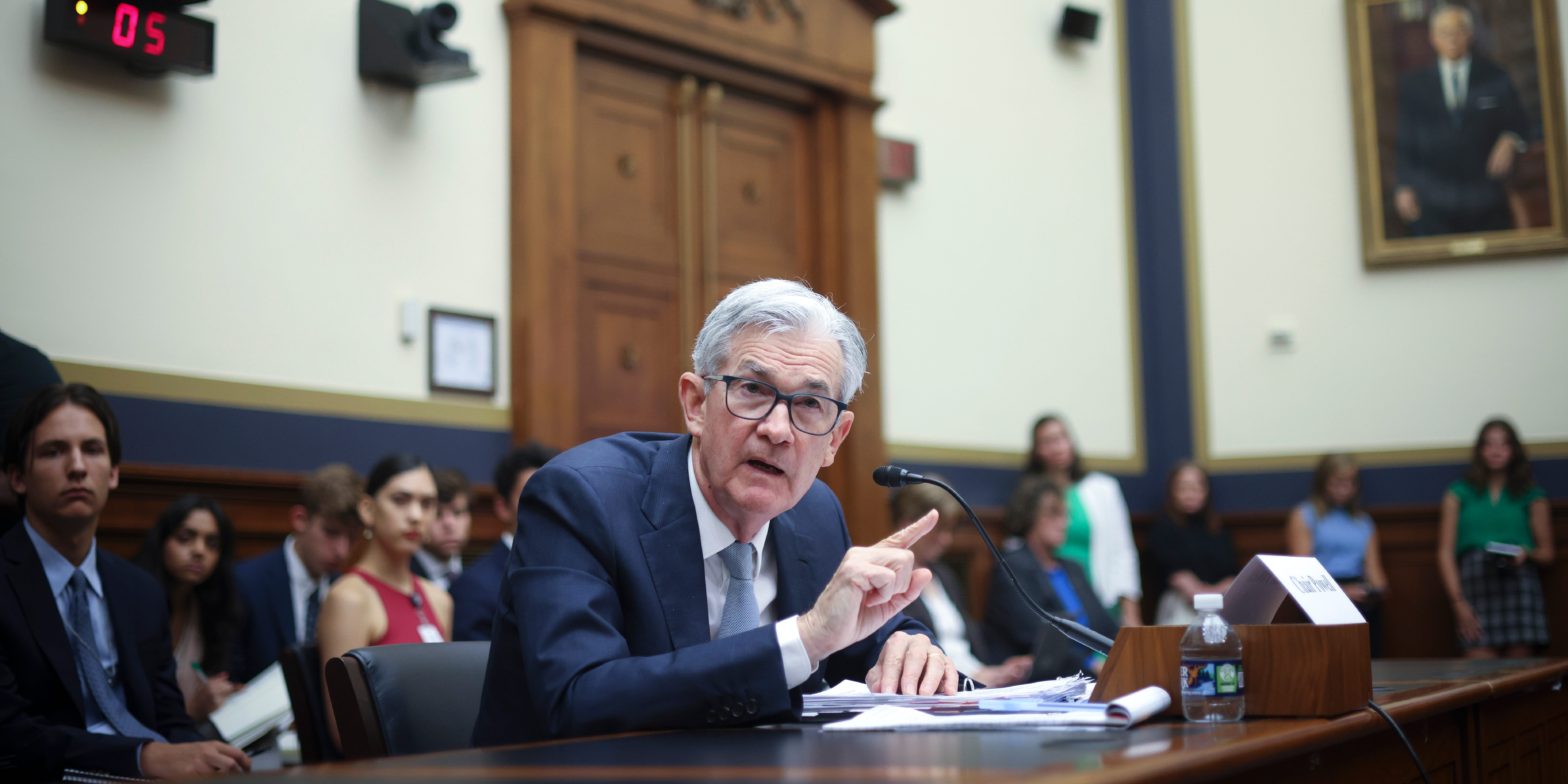A “market riot” won’t stop until the Fed reverses course on its aggressive tightening strategy, Societe Generale global strategist Albert Edwards said. UK gilts “have crashed horribly,” forcing the Bank of England to temporarily halt its quantitative tightening by buying long-dated bonds, he said Thursday. The “markets are still in charge and they just won’t tolerate QT,” in Edwards’ assessment. Loading Something is loading.
A sell-off in financial markets won’t end until the Federal Reserve reverses course on its aggressive tightening strategy, according to Societe Generale global strategist Albert Edwards.
In a note published Thursday, he focused on the recent battering of UK bonds, or gilts, that has sent prices plunging and yields soaring in recent sessions. The UK 30-year gilt yield this week shot past 5% for the first time since 2010, and the 5-year yield moved above 4.5% for the first time since 2008, with markets seeing more risk in 5-year bonds than those for eurozone members carrying the heaviest debt loads.
He noted while blame for the selloff has been placed on the UK’s mini-budget — which includes billions of pounds in tax cuts — gilts began selling off last Thursday when the Bank of England’s Monetary Policy Committee said it will reduce its purchases of UK bonds by £80 billion ($88.4 billion) over the next 12 twelve months, to a total of £758 billion.
It also raised the benchmark interest rate by 50 basis points, a less aggressive move than the Fed’s latest rate hike of 75 basis points to fight inflation.
“While most press attention is on sterling’s weakness, it is UK Gilts that have crashed horribly. But the markets have proved that, as in 2018, QT is not ‘boring like watching paint dry’ and they have forced the BoE into an ignominious Powell-like pivot. What comes next? ‘Not-QE’ comes next,” Edwards wrote.
In 2019, Federal Reserve Chairman Jerome Powell said the central bank would restart buying Treasury securities to avoid market turmoil but said “in no sense is this QE,” according to Bloomberg. QT, or quantitative tightening, is the reduction of a central bank’s balance sheet, or its assets and liabilities. The process is a reversal of quantitative easing, or QE, when more funds are pushed into financial systems via bond purchases.
The so-called BoE pivot came this week when it intervened in the bond market, saying it would temporarily purchase £65 billion in long-dated UK government bonds. Bond buying is aimed at pulling yields down and lowering borrowing costs for the government and companies.
“The bottom line is, after decades of central bank stimulus inflating bubbles and financial leverage to grotesque heights, the markets are still in charge and they just won’t tolerate QT,” Edwards said.
US bond yields also spiked during this week’s panic in bond markets. The 10-year Treasury yield rose to 4% for the first time since 2010.
The Federal Reserve this month ramped up its own quantitative tightening program to $95 billion a month. Fed officials are allowing a monthly run-off of $60 billion of Treasuries and $35 billion of mortgage-backed securities. Its balance sheet shot up to about $9 trillion under QE from under $1 trillion before the 2008 global financial crisis.
Hinting at another possible pivot, Edwards referred to a quote by former heavyweight champion boxer Mike Tyson: “Everyone has a plan till they get punched in the mouth”.
“Which reminds me, isn’t the Fed in the process of doubling its QT to $96 bn a month? Good luck with that!” wrote Edwards.
